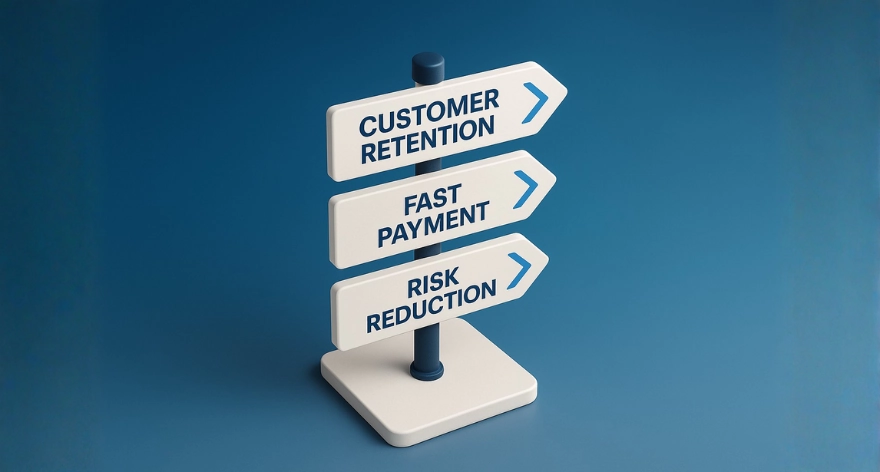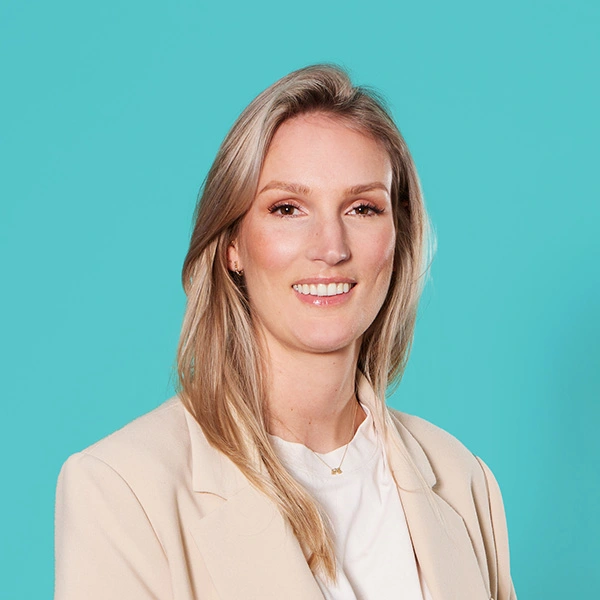Credit management is no longer just about ‘collecting invoices after the fact’. The field is rapidly evolving into a strategic part of customer relationship management. We spoke with Marverick van de Beeten, Chief Revenue Officer at MaxCredible, about the trends, challenges, and the role of data and technology.

“Credit management has become much more strategic in recent years,” says Van de Beeten. “More and more companies are making decisions up front instead of just reacting when something goes wrong. Look at digital players such as Bol.com or Coolblue: credit management is fully integrated into their business operations. It’s all about customer retention, not short-term debt collection. Acquiring a new customer costs more than retaining an existing one, so organizations are forced to act smarter and more proactively."
People and tech
According to Van de Beeten, the biggest challenge lies in striking a balance between people, processes, and technology. “The human factor is the most unstable, but at the same time indispensable. Technology is faster, more consistent, and less prone to error, but customers sometimes just want to feel heard. You have to combine both: automated processes that are efficient and leave room for personal contact. That interplay determines success.”
The value of data quality
An important theme in the conversation is combining internal and external data. Van de Beeten explains: "If you only look at your own payment history, you miss the broader context. By combining internal payment data with external business information, you can see whether a customer is only late with payments to you or whether this is visible across the entire market. That makes a world of difference. You can determine much more quickly whether you are dealing with a relationship problem or a real risk profile. This reduces risks and increases the predictability of cash flow."
This has a significant impact in practice. Companies can refine their follow-up procedures: “A low-risk profile might receive a friendly text message, while deteriorating behavior might warrant personal contact. This allows you to make better use of your capacity and reduce your workload.”
How much money is tied up in a complaint
According to Van de Beeten, reliable cash flow forecasting remains a challenge for many organizations. He sees three conditions: segmentation, communication, and organization. "Not every customer should be treated the same. Dynamic segmentation that takes changes into account is essential in this regard. In addition, the customer must be aware that they are in default, and this must be communicated through the right channel, in the right tone of voice. Next, the entire organization must participate in collecting the invoice: the speed with which errors in sales, finance, logistics, or marketing are resolved all have an effect on cash flow. Technology helps enormously here: with issue management, you can see exactly how much money is tied up in complaints and where the bottlenecks in the organization lie, so that you can resolve them structurally. Dashboards make this concrete and measurable.
AI as an accelerator, not a replacement
AI is inevitable in this story. But Van de Beeten emphasizes that it is about practical applications. "For example, we have developed an AI agent that helps customers set up the application and answer substantive questions. That saves a lot of time. AI takes repetitive tasks off our hands and makes processes scalable. But the human factor remains necessary in complex or sensitive situations. AI enhances humans, it does not replace them. Our customers greatly appreciate the personal customer service."
MaxCredible's software has been nominated for the Credit Innovation Award, which will be presented at Credit Expo 2025. The VCMB jury says: MaxCredible transformed its platform into a self-learning, AI-driven system that optimizes both cash flow and customer relationships. With predictive analytics and empathetic communication, the platform reduces payment arrears, while shifting the role of credit manager from “debt chaser” to “credit strategist.”
Strategic control with dashboards
CFOs are increasingly looking at dashboards as derivatives of their team(s)' KPIs. According to Van de Beeten, these are becoming increasingly broad: "It's no longer just about financial figures. We have dashboards that even include CO₂ reduction. Integrations with various data sources, such as Salesforce, allow you to deepen your analyses much further. But, and this is crucial, a dashboard is only as good as the data behind it."
The importance of partnerships
Looking ahead, Van de Beeten expects data and technology to become even more integrated into the order-to-cash process. “In an ideal world, customers would pay immediately, even if that meant we would no longer have any business,” jokes Van de Beeten. "But reality calls for further automation and smart risk management. New technologies will continue to shape the market, and partnerships are indispensable in this regard. The collaboration with Altares Dun Bradstreet is an example of this: linking external data to internal payment data creates a predictable, automated, and customer-focused approach. This gives companies worldwide the opportunity to realize their predictable cash flow while strengthening their customer relationships."
Proud of co-creation
Finally, Van de Beeten shares what he is personally proud of: “Our software is of very high quality, but its real value lies in how we continue to develop it together with our customers. We discuss processes, add functionalities that meet their needs, and ensure that they can use them optimally. This co-creation means that customers stay with us and continue to see value in what we offer. Ultimately, it's about becoming successful together. ”
Discover how the integration between Altares Dun & Bradstreet and MaxCredible makes your credit management smarter and more predictable.

Marverick van de Beeten, Chief Revenue Officer at MaxCredible
